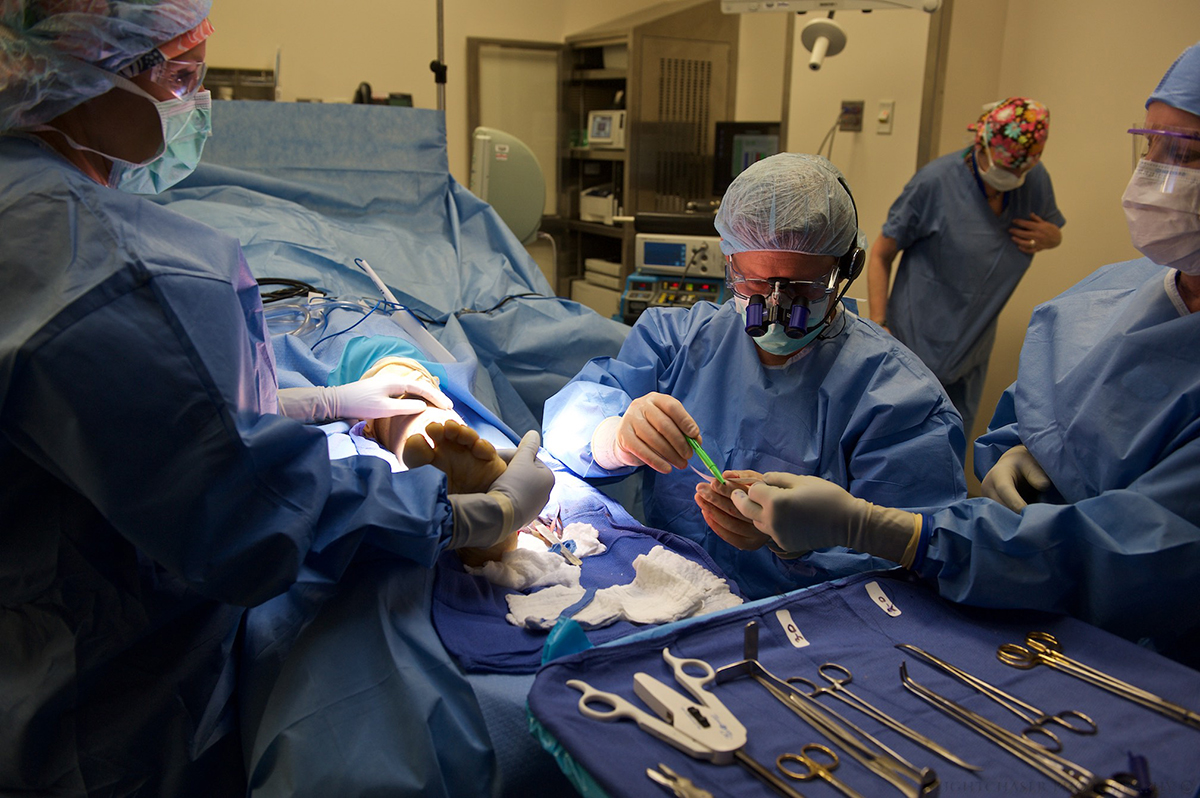Groundbreaking Surgery Could Allow Patients to Move and Feel Prosthetic Limbs

Jim Ewing in surgery/Photo courtesy of Brigham and Women’s Hospital
As a rock climber, Jim Ewing relies on his legs every single time he does what he loves. As an engineer, he has a thirst for innovation. That combination has him poised to experience something extraordinary.
Ewing, 52, suffered a host of injuries after a 2014 rock climbing fall in the Cayman Islands, which eventually led to the amputation of his lower left leg. But instead of opting for a classic procedure, in July, Ewing became the first patient in the country to undergo dynamic-model amputation.
If successful, the experimental procedure, performed at Brigham and Women’s Faulkner Hospital, will allow Ewing to control and interact with his prosthesis like a natural limb, allowing for complex motion, sensation, and perception.
The operation—now known as the Ewing Amputation—was no easy feat, pulling in plastic, orthopedic, and vascular surgeons, as well as biomechatronics experts from the MIT Media Lab. It was overseen by Matthew Carty, director of the Lower Extremity Transplant Program at Brigham and Women’s Hospital and the inaugural recipient of the Stepping Strong Innovator Award.
“By reinventing the way amputations are performed,” Carty said at a press conference, “we hope to elevate them to the status of another form of limb salvage.”
Unlike traditional amputations, the surgeons preserved connections to maintain signaling between the muscles and the brain, allowing Ewing to flex and point his foot, turn his ankle, and complete other complex actions. To do so, Carty and his team effectively built a pulley system within the leg, which enables the muscles to move and slide in concert.
To facilitate such motions, Ewing received a high-tech prosthesis developed by MIT Media Lab’s Hugh Herr and his team. They’ll next work to connect the prosthesis to Ewing’s nervous system, and to implant electrical activity sensors into the muscle tissue to evaluate motion and control. Doing so, hopefully, will allow Ewing to sense and control his prosthesis as easily as he would his own leg, feeling it in space and moving it effortlessly.
Ewing is already recovering well and has begun walking and climbing. Within six months, he should be fully up and running.
“I’m tremendously thankful for the brilliance of Dr. Carty and Professor Herr and their teams. [They] have given me, and will give other amputees, a far better quality of life than could have been dreamed of,” Ewing said at the press conference. “Given that I literally fell into this situation, I consider it a great honor to have this new amputation protocol bear my name.”
To learn more about the Ewing Amputation, check out the video below. With more time and tweaking, the technique could also be used for upper limb amputations.


